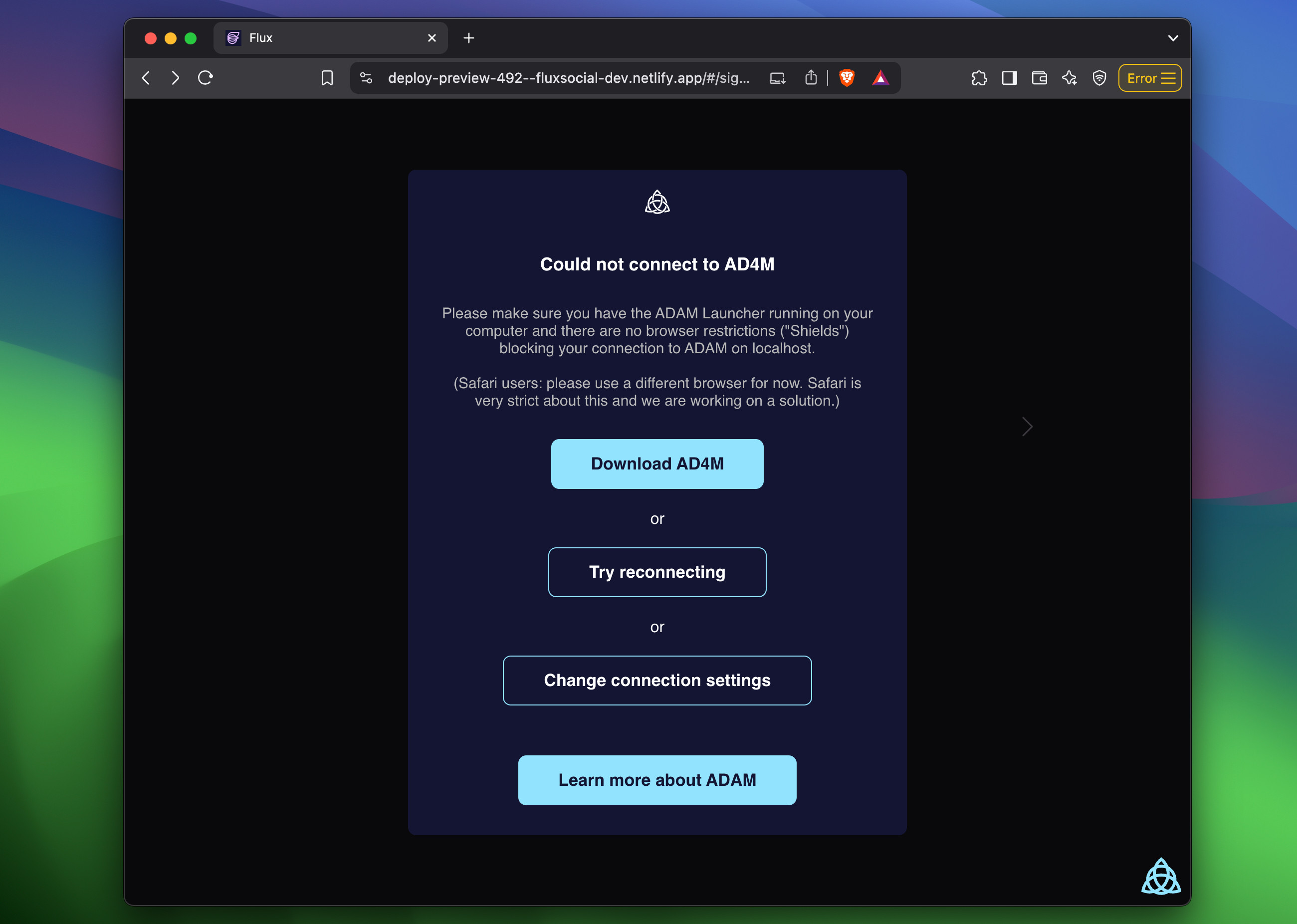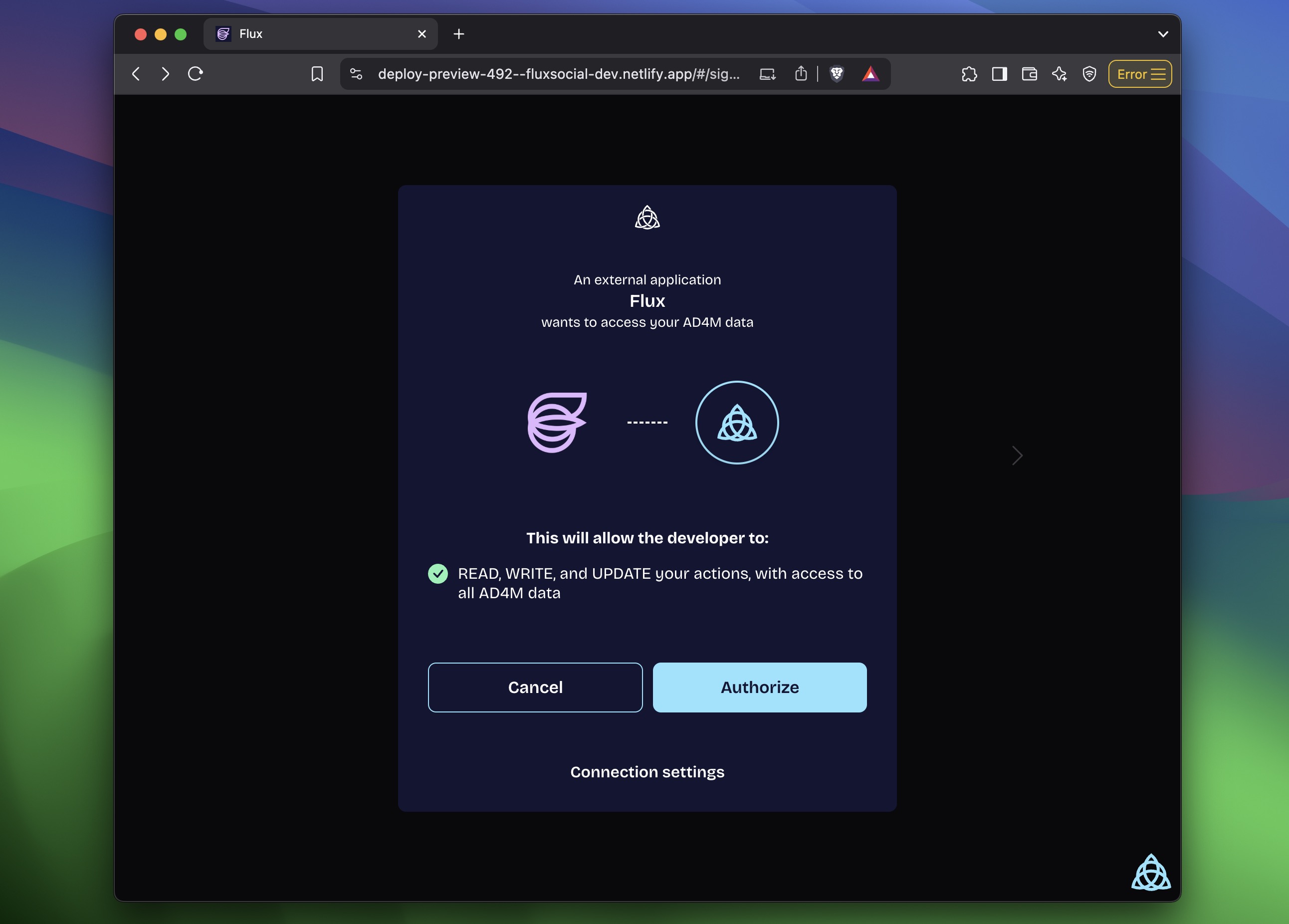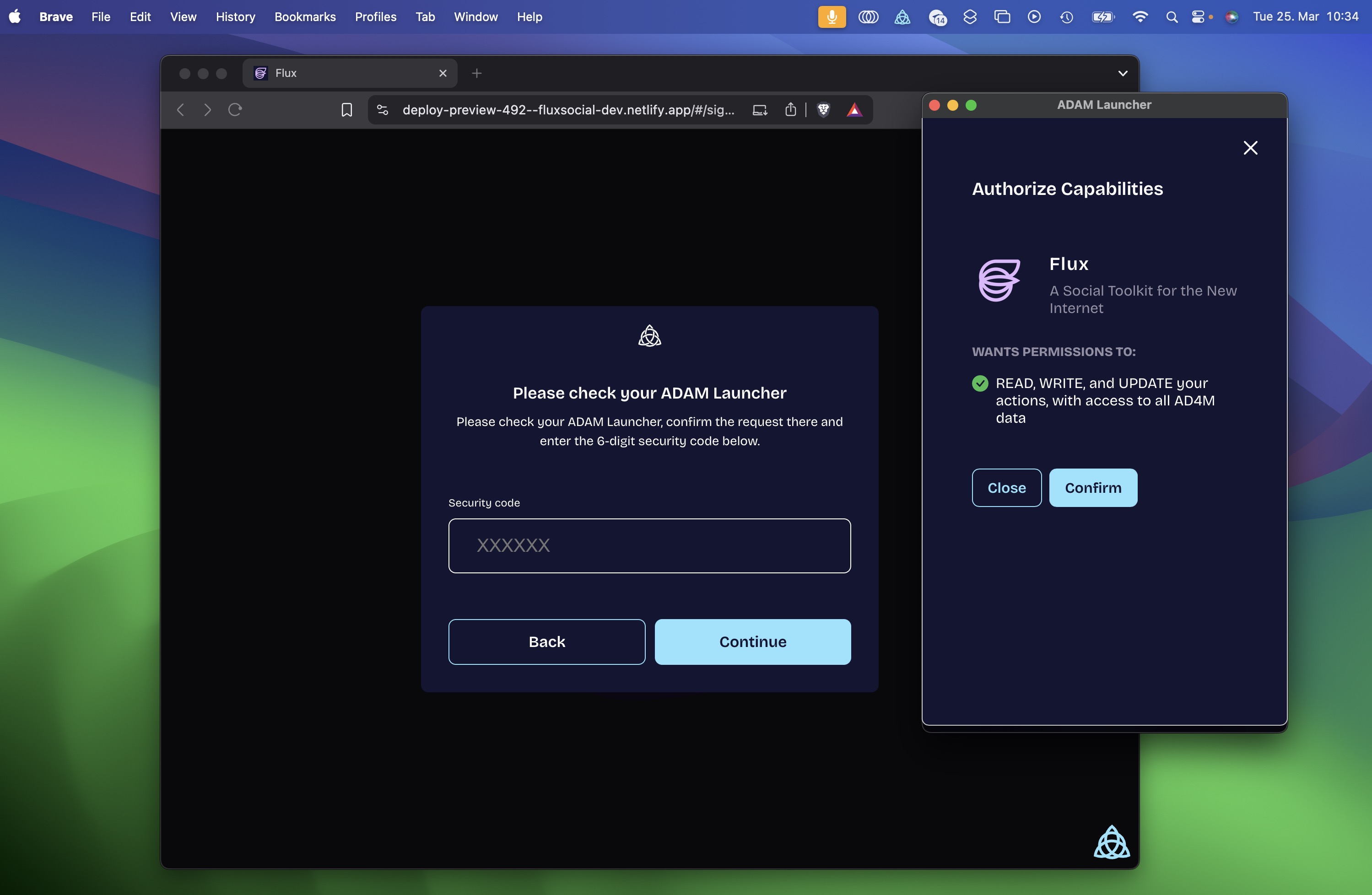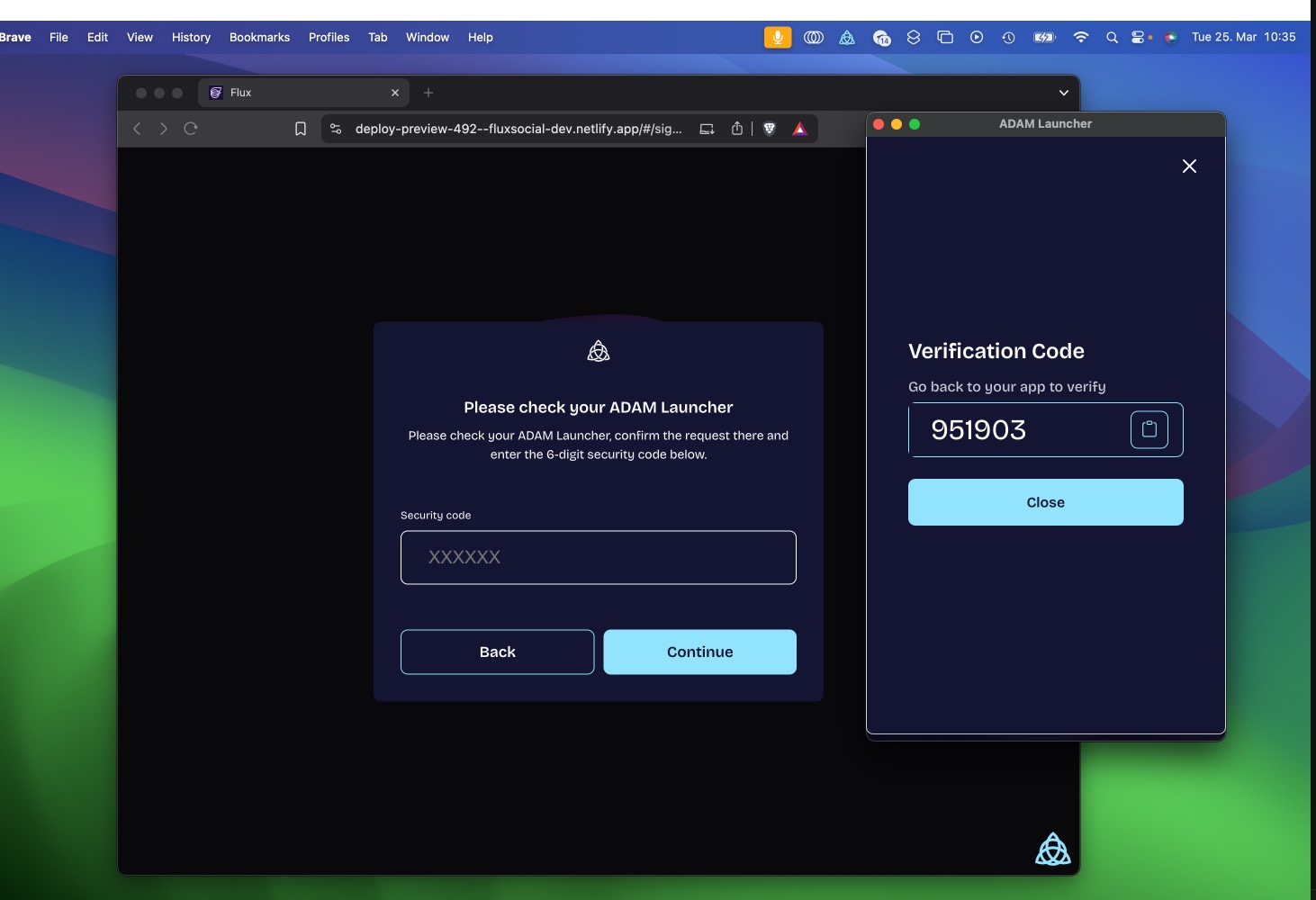Authentication & Capabilities
Overview
AD4M uses a capability-based security model to protect user data and control access to agent functionality. Every application that wants to interact with an AD4M executor needs to request specific capabilities, which are then granted (or denied) by the user.
What are Capabilities?
Capabilities in AD4M are like permission tokens that:
- Define what data an application can access (which perspectives)
- Specify what operations an application can perform
- Are scoped to specific domains and functions
- Can be revoked by the user at any time
A capability token might grant permissions like:
- Read access to specific perspectives
- Write access to create or modify links
- Ability to create new perspectives
- Permission to manage agent relationships
- Access to specific language functions
Authentication Flow
Standard Flow
When an application wants to connect to an AD4M executor, it goes through a secure authentication handshake:
- The application requests access with specific capabilities
- The AD4M executor generates a random verification code
- The user must confirm the request and enter the code
- Upon successful verification, a capability token is issued
This flow ensures that:
- The user explicitly approves application access
- The application only gets the permissions it needs
- The connection between UI and executor is secure
Using ad4m-connect
The easiest way to implement this flow is using our ad4m-connect library:
import Ad4mConnect from "@coasys/ad4m-connect";
const ui = Ad4mConnect({
appName: "My First ADAM App",
appDesc: "This is my first app here.",
appDomain: "ad4m.dev",
appIconPath: "https://i.ibb.co/GnqjPJP/icon.png",
capabilities: [{
with: { domain: "*", pointers: ["*"] },
can: ["*"]
}],
});
// .connect() will show the authentication pop up
ui.connect().then((client) => {
// Client is now authenticated with requested capabilities
});If ad4m-connect could not find a running AD4M-executor, it will show a screen prompting the user to either download and run the AD4M Launcher to provide other connection settings:

When ad4m-connect was able to find a running AD4M-executor, it will begin the authentication flow:

Clicking on "Authorize" will trigger the request against the AD4M-executor and Launcher will open a pop-up prompting the user with the nature of this request:
- The application requesting access
- The capabilities being requested

If the user approves the request, the Launcher will show a six-digit random secret code that needs to be entered into the app UI. That way we have safely established that the network agent initiating the capability request (as seen from the AD4M-executor) really is the UI the users wants to use. (It could run on an external device, like the user's phone connecting through a proxy server).

Capability Specification
When requesting capabilities, you need to specify:
{
with: {
domain: string | "*", // Which perspective/domain
pointers: string[] | "*" // Which parts of the domain
},
can: string[] | "*" // Which operations are allowed
}Examples:
// Request access to everything (development only)
{ with: { domain: "*", pointers: ["*"] }, can: ["*"] }
// Request read-only access to a specific perspective
{ with: { domain: "perspective-uuid", pointers: ["*"] }, can: ["read"] }
// Request specific operations on a domain
{ with: { domain: "friends", pointers: ["*"] }, can: ["read", "add", "remove"] }Admin Credential Override
For automated scenarios or system integration, the authentication handshake can be bypassed using an admin credential:
// In your application
const client = new Ad4mClient({
adminCredential: "your-secret-here"
});This is particularly useful for:
- CI/CD pipelines
- Testing environments
- System services
- Management interfaces (the AD4M Launcher uses this internally)
To enable this on the executor:
ad4m-executor run --admin-credential your-secret-here⚠️ Security Note: The admin credential grants full access to the executor. Use it carefully and never expose it in client-side code or public repositories.
Best Practices
-
Request Minimal Capabilities
- Only request permissions your app actually needs
- Use specific domains and operations instead of wildcards
- Consider read-only access when possible
-
Handle Authentication States
- Check if capabilities are still valid
- Implement reconnection logic
- Handle capability revocation gracefully
-
Secure Storage
- Store capability tokens securely
- Never expose admin credentials
- Implement token refresh mechanisms
-
User Experience
- Clearly explain why your app needs certain capabilities
- Provide feedback during the authentication process
- Handle errors gracefully
More Information
For more details about implementing authentication in your application:
- Check the ad4m-connect documentation (opens in a new tab)
- See the Ad4mClient API reference